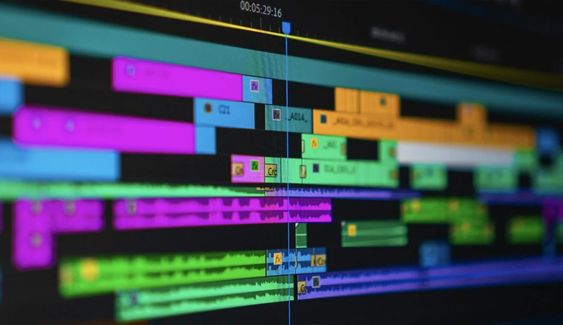after effect
- instctor
-
Category
Graphic Design
-
Topics
vfx & Graphic

What is Adobe Adobe After Effect? The benefits of learning it through our best institute for Adobe After Effect?
Adobe After Effects was originally created by Pixar as part of their RenderMan graphics pipeline. It was later sold to Adobe, which has continued to develop the program into a full-fledged suite of tools for creating motion graphics and visual effects. Adobe After Effects is an award-winning, feature-rich editing program that lets you create stunning visual effects and motion graphics, from green screen compositing to 3D animation. After Effects also includes a wide range of audio tools for adding sound to your projects. Adobe After Effects is available for Windows, Mac OS X and Ubuntu Linux operating systems. The software has been downloaded over 150 million times from its website since it was first released in 1998. After Effects can be used as an integrated part of Final Cut Pro X or Adobe Premiere Pro CC to create motion graphics videos. It also has tools for compositing video with other media, such as audio and text. Adobe After Effects provides 3D compositing capabilities for creating compelling titles, logos and other elements for your film or video projects. You can also use it to create animations and video games by importing video files from the web or from your hard drive. Adobe After Effects lets you manipulate images, add sound effects, apply filters and other effects to your footage, and add motion tracking points to track movement. The program also allows you to import external photos or videos as layers so you can easily blend them together into a final project. The program includes built-in animation tools that allow you to quickly create complex animations using keyframes.
After Effects is being used for more than 20 years to help create special effects in movies. It is one of the most popular video editing programs available and it's used by some of the biggest names in Hollywood. Some of the more notable uses of After Effects include:
Advertising production - Creators use After Effects to create animated commercials and other branded content for television, web, and mobile device advertising campaigns.
VFX (visual effects) - Creators use After Effects to create digital effects for movies, television shows, music videos, and more. These digital effects can be added to footage shot in any format — including HD or 2K — to create an engaging experience for viewers.
Animation - Animators use After Effects to create quick visual effects animations that can be used in a variety of applications including social media marketing campaigns for companies like NASA or Apple Music.
Compositing - Compositors use After Effects to edit footage shot on motion control cameras like GoPros or DSLR cameras as well as still photos into a finished piece using PhotoShop or other photo editing software.
User friendly - The first advantage is that it provides an easy way to create complex effects with just one click. You don’t need to have any prior knowledge of video editing or programming skills to use this software. All you need is a good understanding of how animation works.
Ease of use - Adobe After Effects is very easy to learn how to use it without having any prior knowledge of programming languages like C++ or Java. The interface itself makes it possible for beginners like me to understand what they are doing without any help from experts on technical matters
Supported Formats - Adobe After Effects supports a wide range of file formats including 3D, 2D and Web compatible formats like AVI, MP4, WMV and MOV.
Adobe After Effects is an impressive piece of software that can be used to create all kinds of projects. However there are some disadvantages to using it:
The learning curve - Adobe After Effects is one of the most complex programs available on the market today. The learning curve can be quite steep if you're not familiar with it already, so people may find themselves spending more time learning how to use it than actually creating something with it.
Proprietary plugins - Adobe After Effects requires its own proprietary plugins in order for your project to work properly. This means that if you want to use any third-party effects or plugins - such as Final Cut Pro - then you'll have to pay for them separately from the main software itself rather than being included as standard within Adobe.
Platform dependency - After Effects only runs on Windows systems, Mac OS X 10.5 or higher and Linux. In order to run it on other operating systems such as iOS devices, Android devices and the web, you will need an Adobe plugin called AirDroid Sync.
Cost: The final disadvantage is that it is quite pricey compared to other software such as Premier Pro.